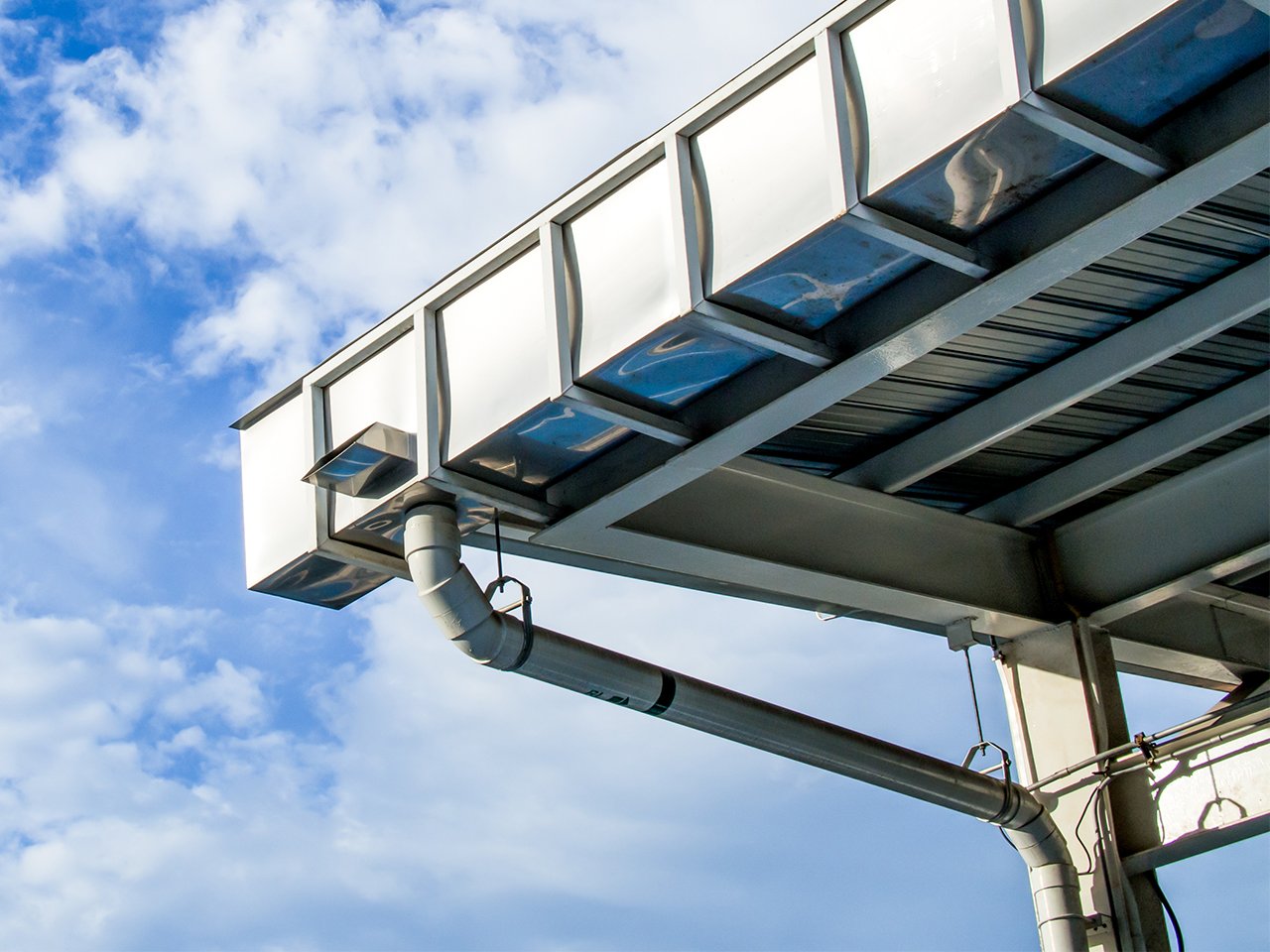
The Impotence of Commercial and Industrial Drainage Roof Systems
Many commercial roofs are flat, which makes drainage systems important and standing water may cause a lot of damage to the roof. There are several different types of commercial and industrial drainage systems, so it is necessary to explore the options to find out which one is best for a business like E Industrial Engineering.
The Importance of drain systems
Drains take channeled water and carry the water off of the roof, which helps to protect against both interior and exterior damage.
If you do not have a drain system, water gathers on the roof, breaks down the barrier membrane, and seeps inside. If this occurs, it can lead to expensive repairs to fix not just the roof but the inside of the building also. As leaks may cause small problems such as peeling paint, water stains, and molds, as well as big problems such as inventory or product damage and operational setbacks, it is necessary to have a proper drainage system on the property.
The two main forms of drain systems
When you select the roof drainage system, be careful that you have two main options to consider –
1.Gravity – The system works on gravity to let water flow down the roof. Variously sloped segments all flow to a single interior drain and work to let the water flow off the roof.
2.Siphonic – This does not depend on gravity. Instead, the mouth of the drain is attached with a part that avoids air from getting in the drain. As a result, the inside of the drain has low atmospheric pressure, takes water in, and helps it to move freely without the requirement for a graded slope.
The four types of drain systems
There are 4 types of commercial roof drains.
1. Gutters – these are more common in residential areas, but commercial buildings may have gutters installed on the edges of their roofs also to collect water and pass it into a downspout that permits water flow off the surface without even touching the side of the building. For gutters to be effective, they should work with a roof that has a slight grade so the water enters the gutter easily.

2.Downspouts- this roof drainage system is the same as the gutter. It works in combination with scupper by carrying the water to the ground. This comes in the form of a pipe joined to the side of the building. The water flows from the gutter to the drainage pipe without even touching the building, preventing mildew, moss, and mold from forming on the outside of the building.
3.Scuppers – commercial roof drains come in the form of a scupper, an opening or channel placed in the sidewalls of the roof, which acts the same as a gutter in allowing water to flow freely off the roof. While the gutter travels along the side of the roof, the scupper helps water flow through and then connect with a downspout or gutter.
4.Internal Drains – a number of commercial buildings possess an internal drain under the surface of the roofs to catch water. These are located where water collects the most or where there is a downward grade, so the center is a common drain location.
Conclusion
Selecting the roof drainage system depends on what type of drain you want, the type of drain the roof can interact with, and what the experts suggest. However when you know the choices available then the process becomes less confusing.




